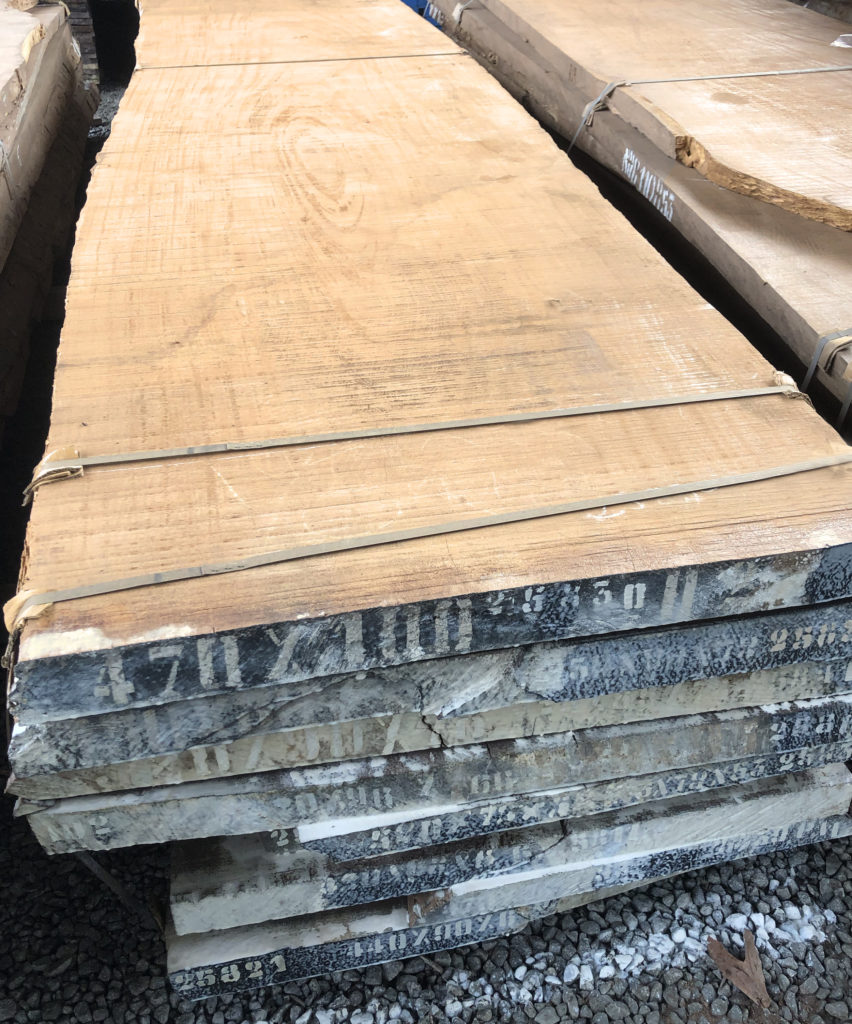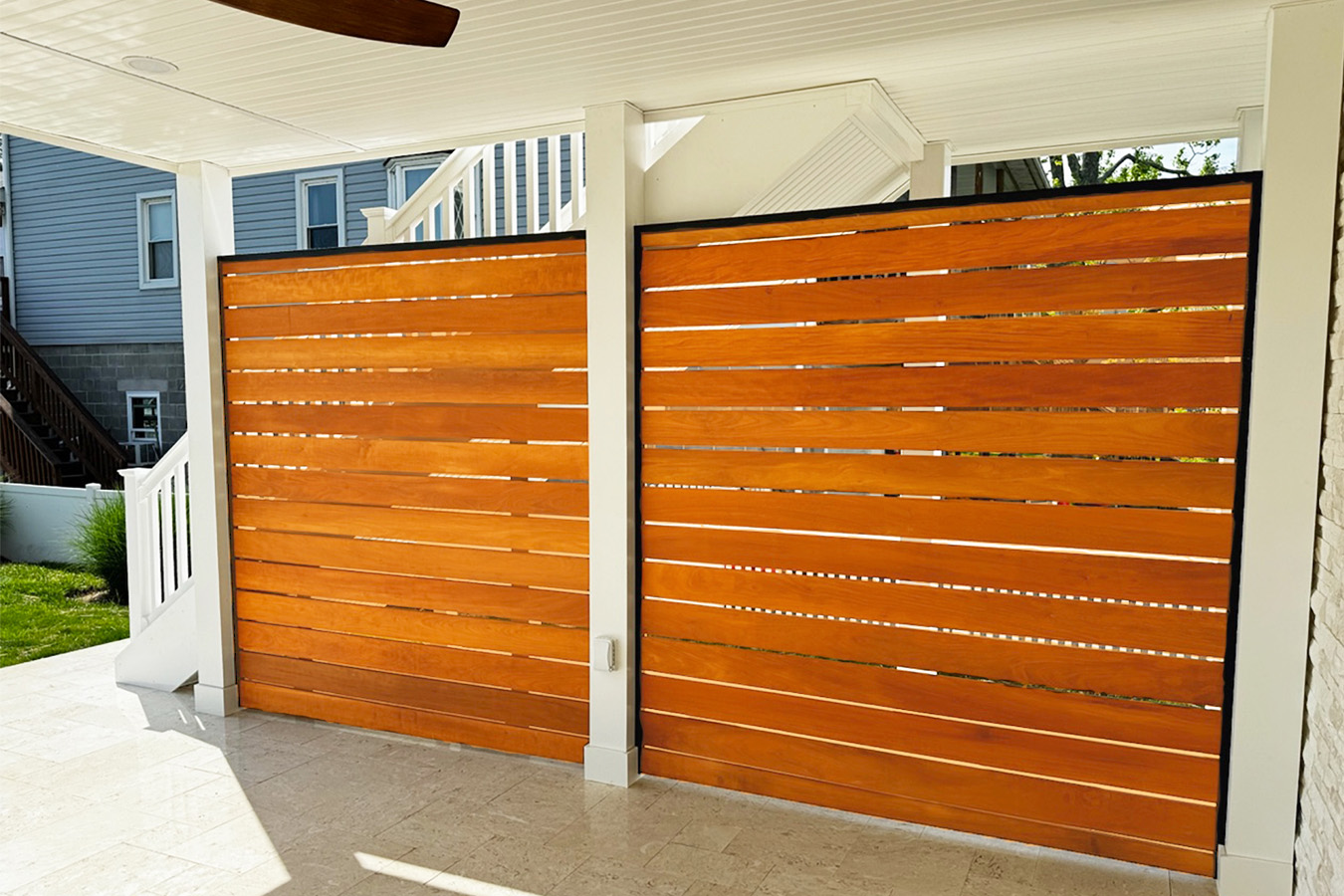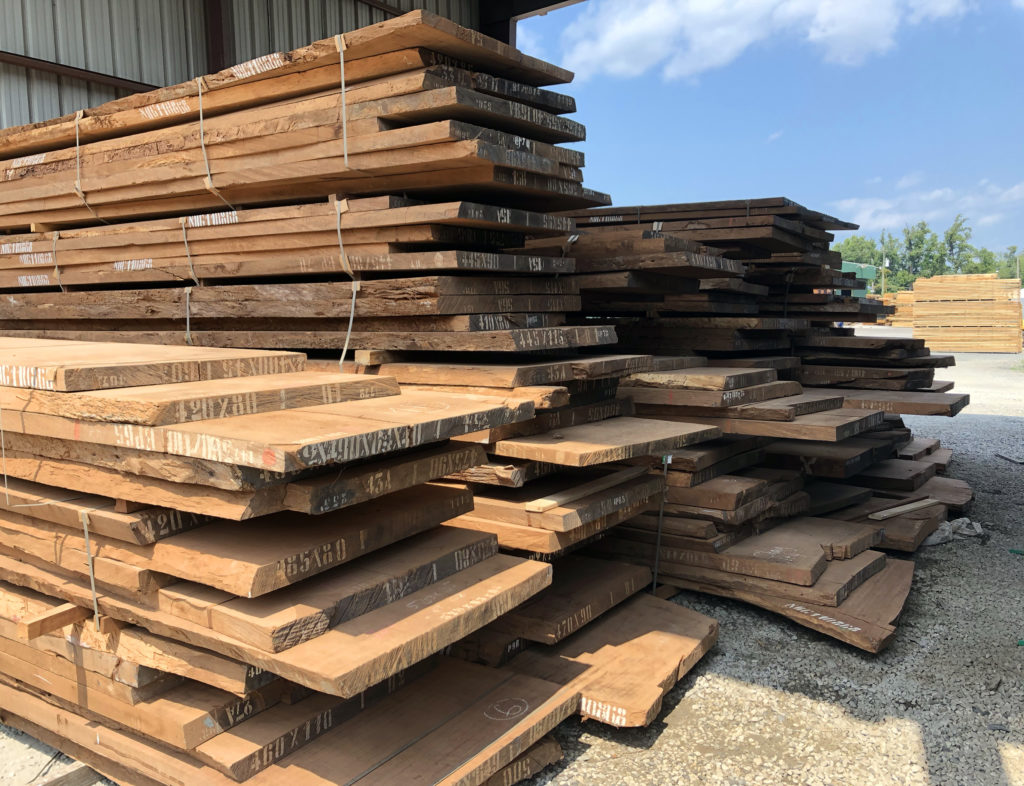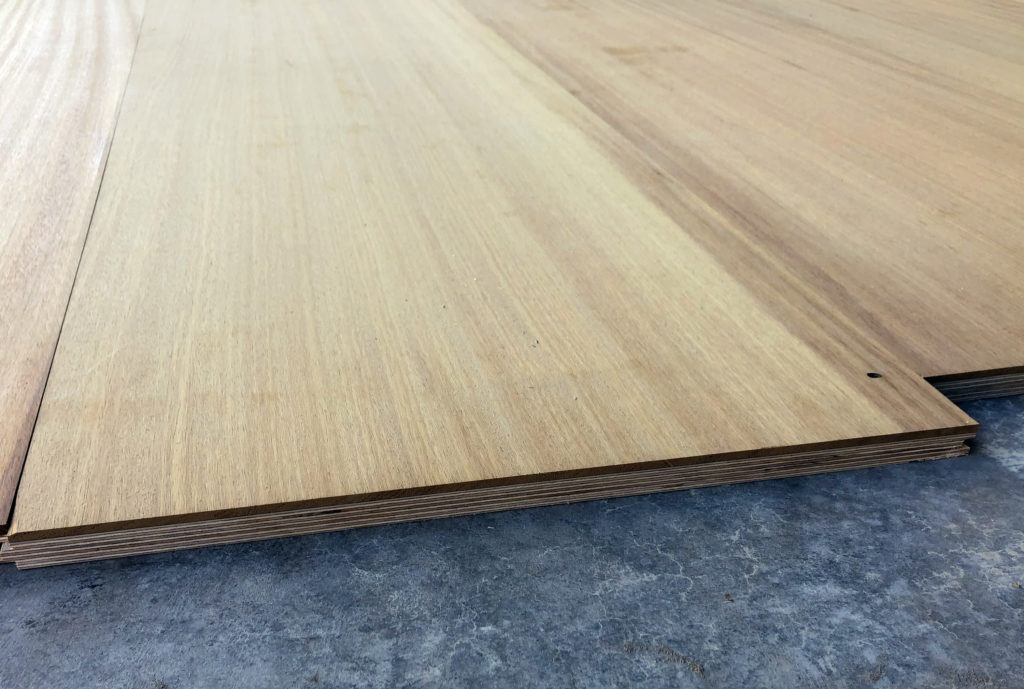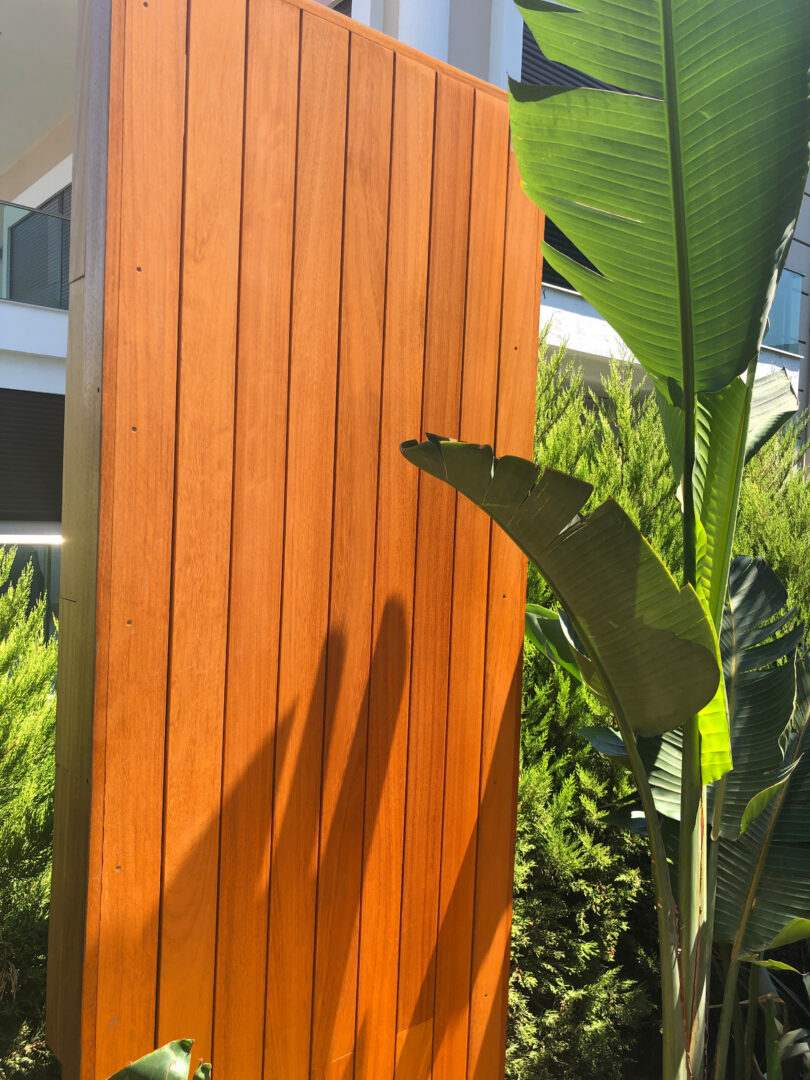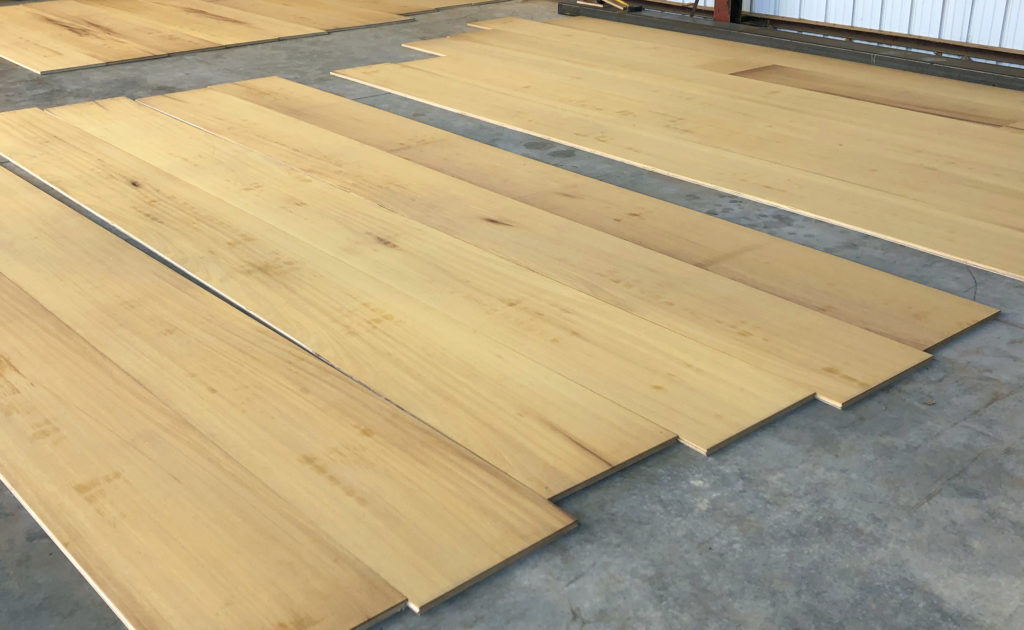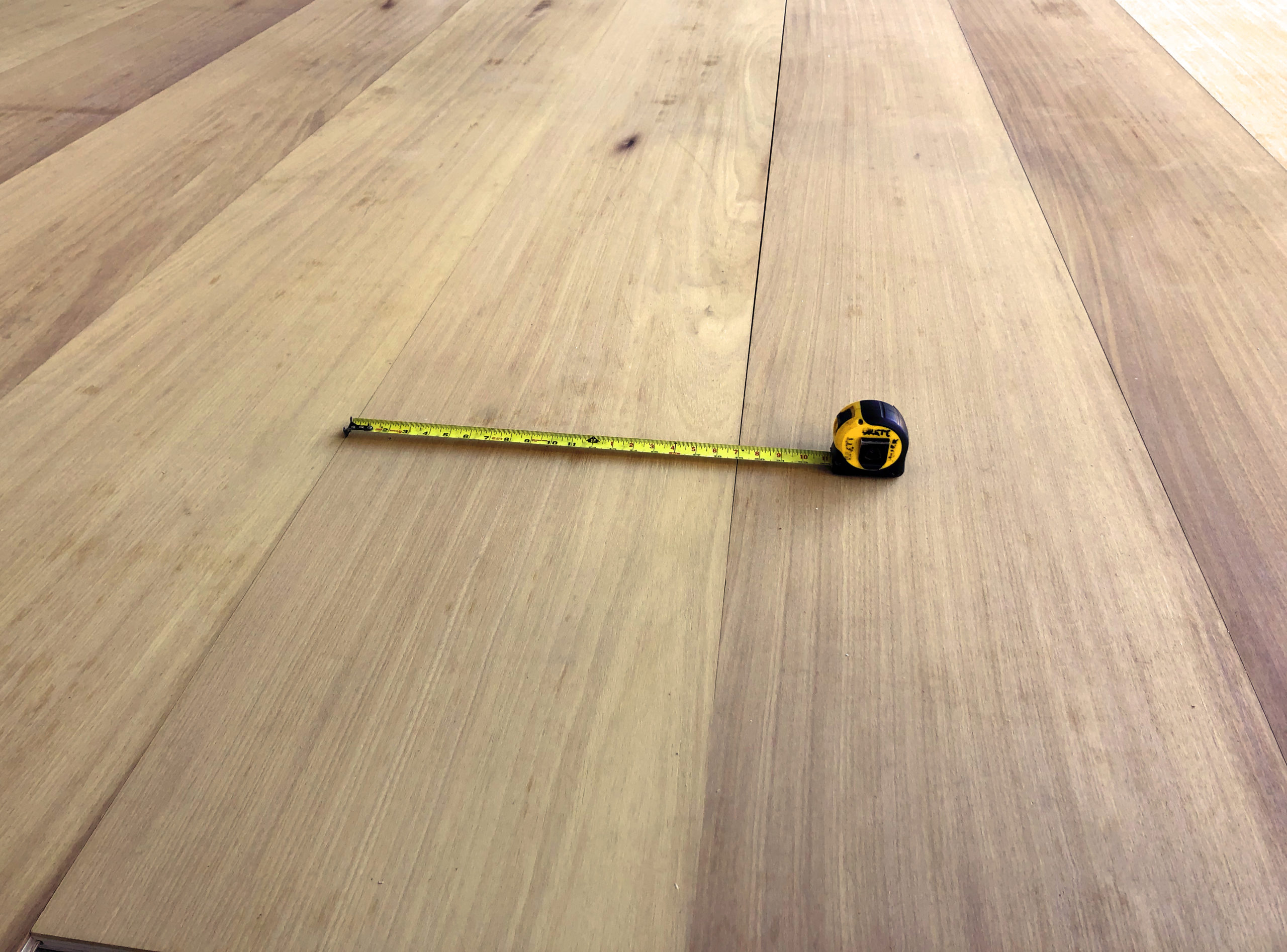Milicia excelsa
AKA African Teak
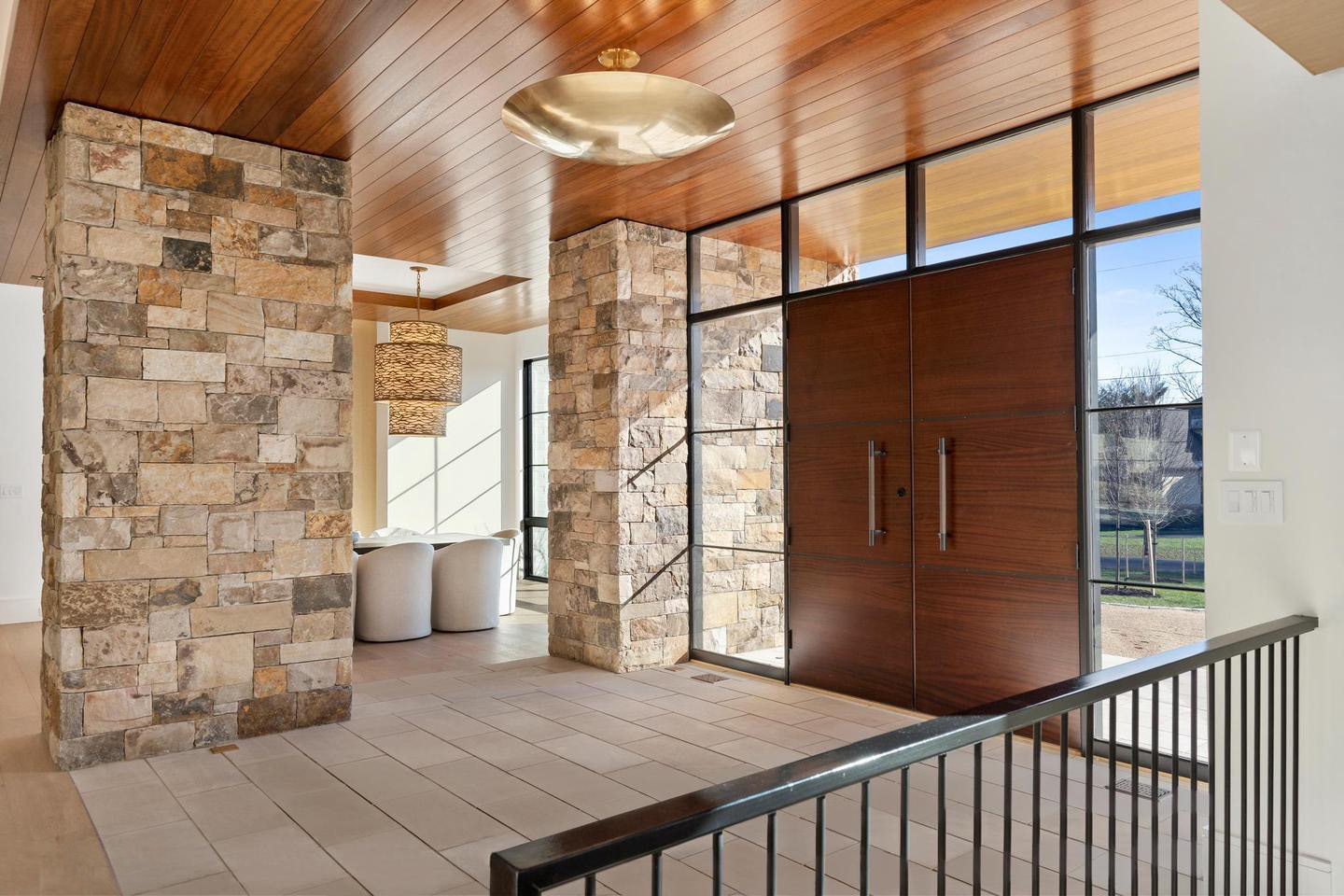
Iroko is a West African hardwood often also called African Teak due to the similar yellow brown color of the two species. Iroko wood comes from Africa, whereas old growth Teak comes from Southeast Asia. Like Teak, Iroko wood is a water resistant species (not water proof) and ideal for exterior applications. Iroko wood is most often used for exterior cladding, pergolas, decking, and even trim. But it has a life for interiors as well. The wide widths make it a prime species for interior engineered flooring, but also wall panels and even some furniture. Its yellow brown look makes it an excellent candidate for the MidCentury style of design which has long been the domain of Teak. In some ways Iroko is a superior species compared with Teak due the extremely large size of the Iroko tree, which produces wide and long boards that are easier to use for millwork applications.
While a bit lighter than Teak, Iroko wood has many of the same properties such as hardness and grain structure. It is even rot and water resistant, making it a great species for exterior and even marine applications. Iroko is used primarily for exterior project like decking and cladding. Its Teak like color makes is an excellent substitute but its enormous sizes mean that it has many used both inside and out in furniture, interior panelling, flooring, trim and more. It is quite hard and holds details well and takes finish of all kinds with a closely packed pored structure.
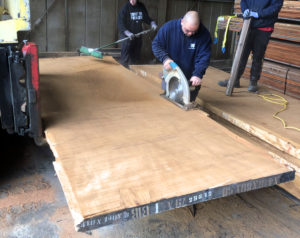
Iroko Wood Characteristics
The grain of Iroko is interlocked like most African wood species, and you will find a ribbon striped effect with quartersawn species. African Teak has a very uniform striped look similar to Sapele, however, and the hardness between the grain stripes is quite consistent, making it much easier to mill than many other interlocked grain species. African Teak is an open pored wood that, while diffuse porous, features pores which are larger in size, making for a rougher texture than Teak or Sapele when freshly milled.
| Character | Units | |
|---|---|---|
| Janka Hardness | 1260 | lbf |
| Bending Strength MOR | 12,700 | lbf/in2 |
| Stiffness MOE | 1,360,000 | lbf/in2 |
| Weight | 4.1 | lbs/board foot |
| Specific Gravity | .55 | |
| Crushing Strength | 7,840 | lbf/in2 |
| Tangential Shrinkage | 3.8 | % |
| Radial Shrinkage | 2.8 | % |
| T/R Ratio | 1.4 | |
Iroko Lumber Applications
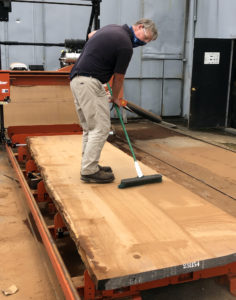
Iroko is an enormous tree yielding great thickness, width and length for its boards. On average the tree will grow 100-130 feet tall with a trunk diameter of 5 feet. What this means is it is fantastic for millwork where long runs of siding or moulding are needed. One of the most common uses for Iroko we see is as cladding. So much that we developed our San Gabriel cladding product to mimic the MidCentury Modern feel and our Grimsa cladding for a quasi torched look. The likeness to Teak and water resistance makes it a great option for yacht cover boards where wide and long boards are a must, but you will find that Iroko has a more uniform grain and color appearance without as much variation as in Teak. Iroko however does have two distinct colors: the honey brown we have been talking about but also a darker caramel brown color. Both weather and even out in color nicely with exposure but it is something to be aware of when order larger quantities and color sorting can be a costly premium for your project if you demand uniformity.
More important is that the size of the tree makes for a wide range of grades from the same tree. In other words, as the long & wide boards are taken for millwork or boat building, what is left represents a great deal of narrower and shorter boards which are perfectly sized for decking, interior flooring, cabinetry, T&G ceiling, or whatever you can dream up. In other words, this huge tree isn’t wasted one bit, making for a wide range of product applications all from the same trunk.
We have even specifically bought log flitches for some of our customers and used every bit of the enormous slabs to make different aspects of a home like flooring, doors, windows, and cabinetry. This creates a harmony not usually possible, since with Iroko so much of the wood may be able to come from the same tree for a beautiful grain and color match.
